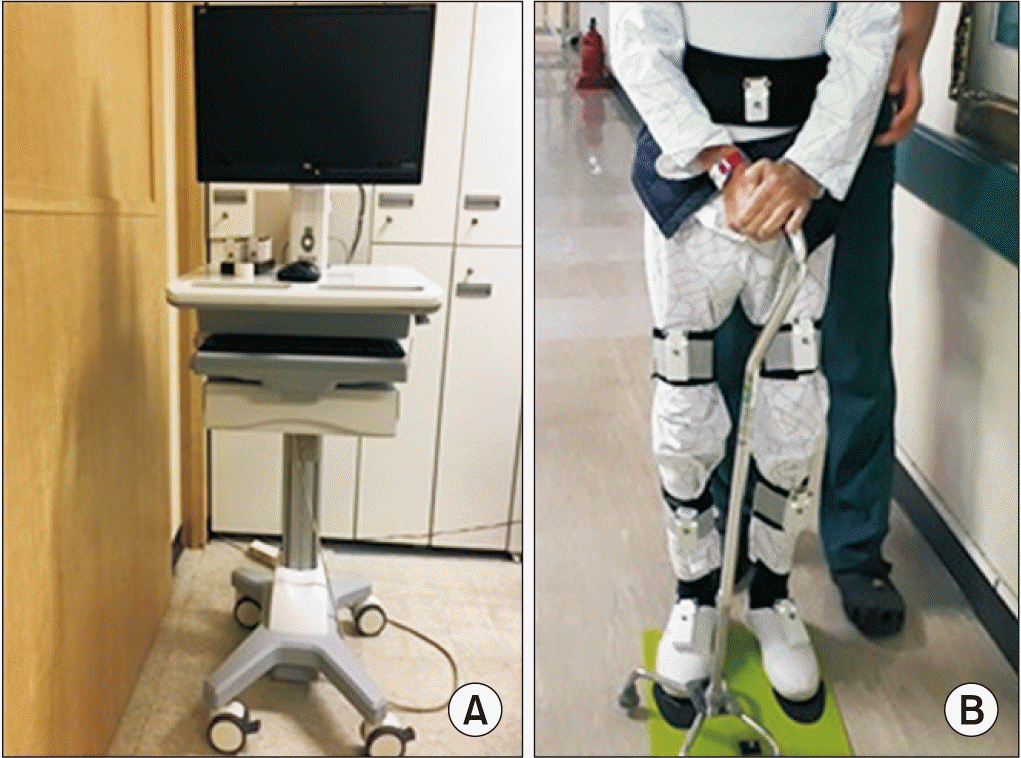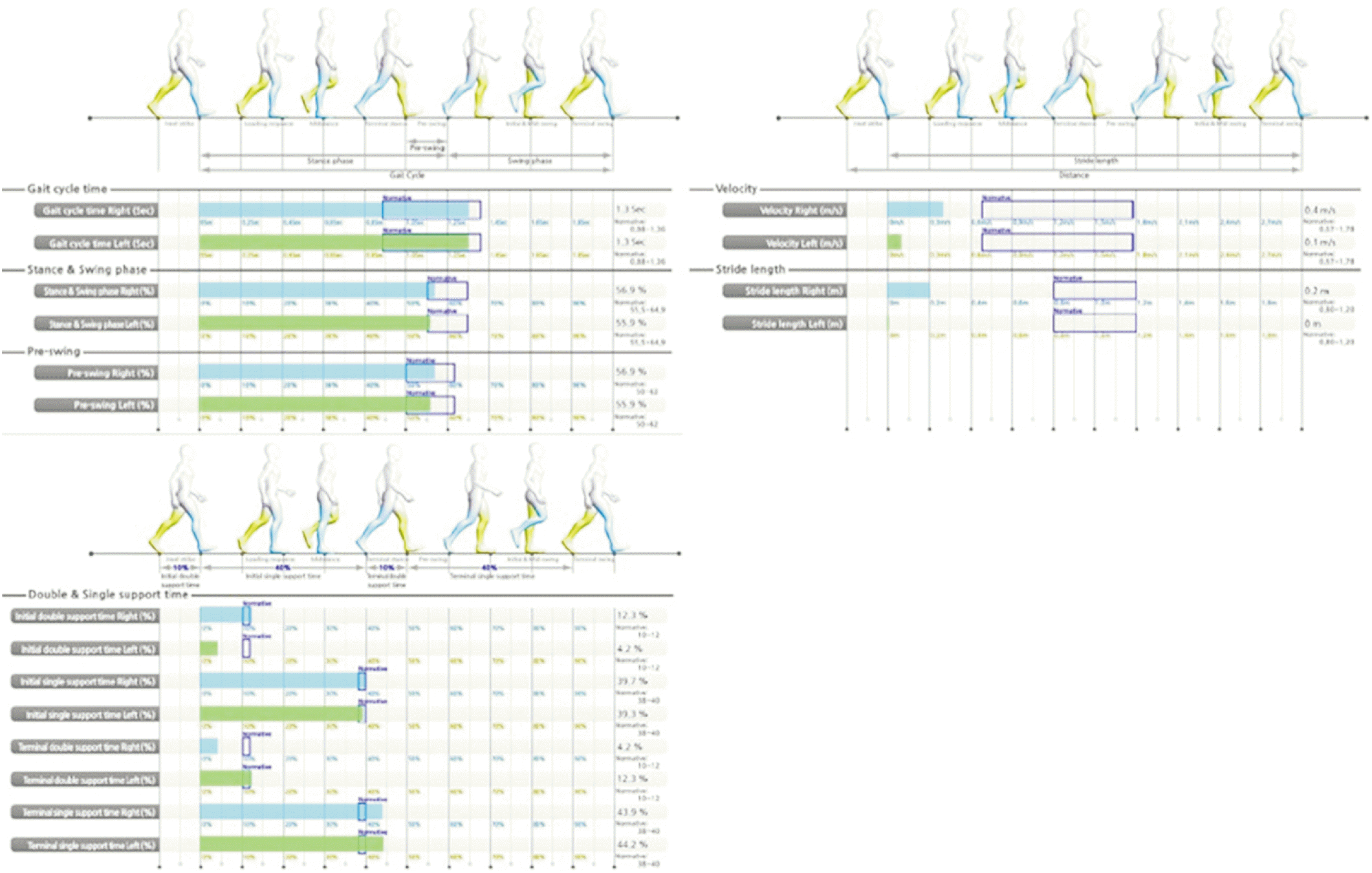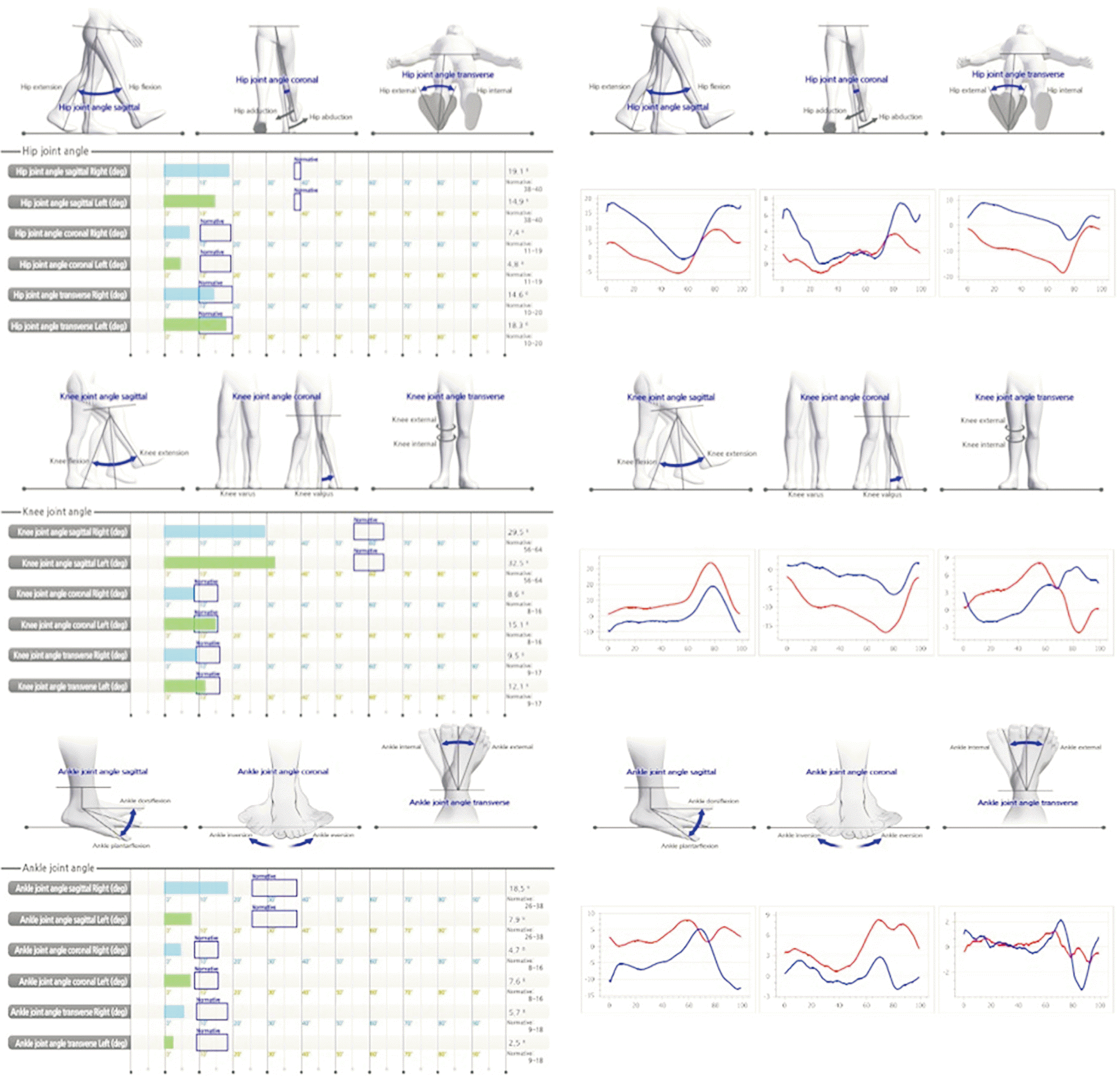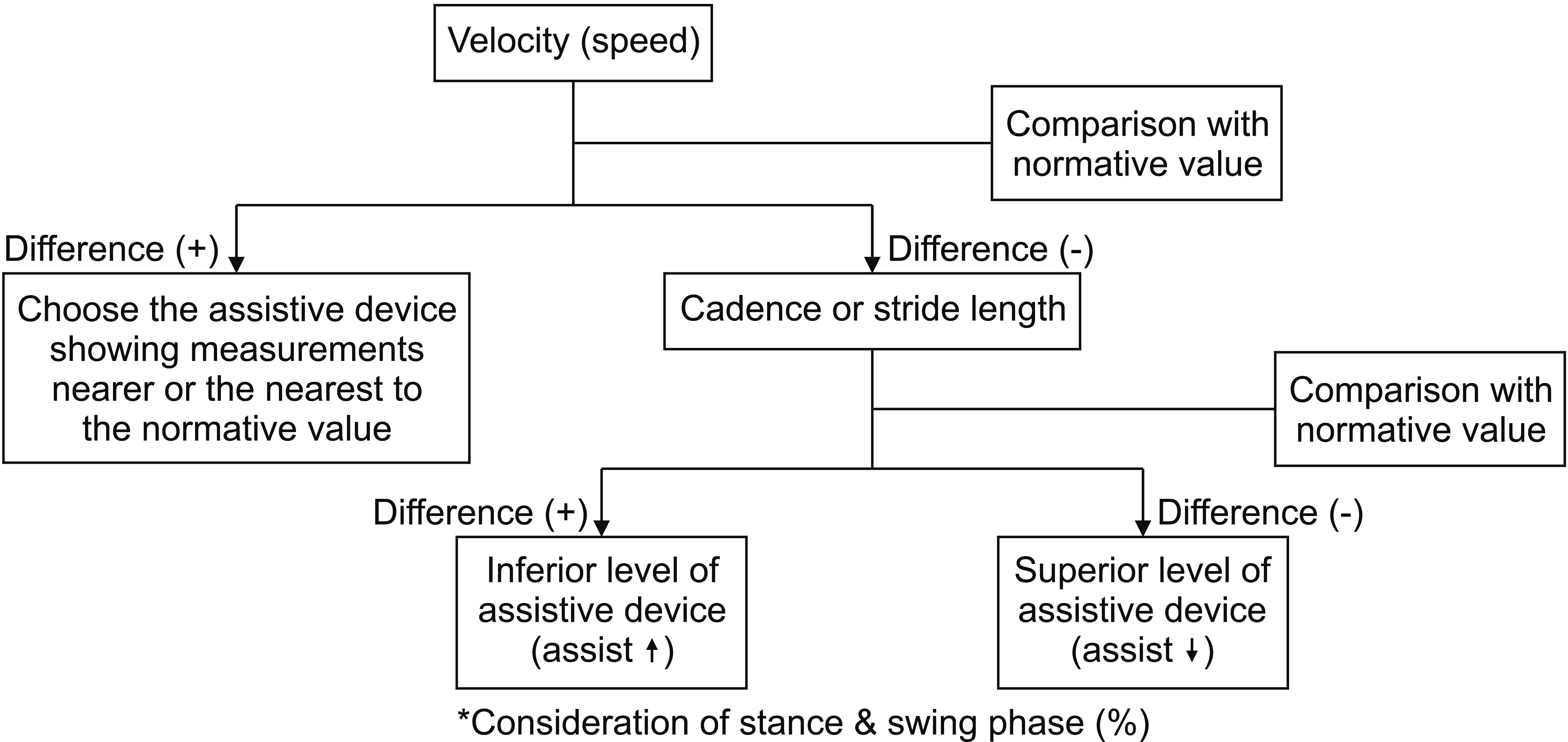1. Sharif Bidabadi S, Murray I, Lee GYF. The application of inertial measurements unit for the clinical evaluation and assessment of gait events. J Med Eng Technol. 2017; 41:612–22.

2. Vargas-Valencia LS, Elias A, Rocon E, Bastos-Filho T, Frizera A. An IMU-to-body alignment method applied to human gait analysis. Sensors (Basel). 2016; 16:E2090.

3. World Health Organization, World Bank. World report on disability. Geneva, Switzerland: World Health Organization;2011.
4. Lee JH, Park SW, Kim DA, Jang SJ, Kim YH. Gait analysis using accelerometer in stroke patients. J Korean Acad Rehabil Med. 2004; 28:488–93.
5. Cho YS, Jang SH, Cho JS, Kim MJ, Lee HD, Lee SY, et al. Evaluation of validity and reliability of inertial measurement unit-based gait analysis systems. Ann Rehabil Med. 2018; 42:872–83.

6. Favre J, Jolles BM, Aissaoui R, Aminian K. Ambulatory measurement of 3D knee joint angle. J Biomech. 2008; 41:1029–35.

7. Watanabe T, Saito H. Tests of wireless wearable sensor system in joint angle measurement of lower limbs. Conf Proc IEEE Eng Med Biol Soc. 2011; 2011:5469–72.

8. van Acht V, Bongers E, Lambert N, Verberne R. Miniature wireless inertial sensor for measuring human motions. Conf Proc IEEE Eng Med Biol Soc. 2007; 2007:6279–82.

9. Luinge HJ, Veltink PH. Measuring orientation of human body segments using miniature gyroscopes and accelerometers. Med Biol Eng Comput. 2005; 43:273–82.

10. Zhu R, Zhou Z. A real-time articulated human motion tracking using tri-axis inertial/magnetic sensors package. IEEE Trans Neural Syst Rehabil Eng. 2004; 12:295–302.
11. Kim MS, Yu SB, Lee KS. Development of a high-precision calibration method for inertial measurement unit. Int J Precis Eng Manuf. 2014; 15:567–75.

12. Lee D, Lee S, Park S, Ko S. Test and error parameter estimation for MEMS: based low cost IMU calibration. Int J Precis Eng Manuf. 2011; 12:597–603.
14. Vienne A, Barrois RP, Buffat S, Ricard D, Vidal PP. Inertial sensors to assess gait quality in patients with neurological disorders: a systematic review of technical and analytical challenges. Front Psychol. 2017; 8:817.

15. Maetzler W, Domingos J, Srulijes K, Ferreira JJ, Bloem BR. Quantitative wearable sensors for objective assessment of Parkinson’s disease. Mov Disord. 2013; 28:1628–37.

16. Caldas R, Mundt M, Potthast W, Buarque de Lima Neto F, Markert B. A systematic review of gait analysis methods based on inertial sensors and adaptive algorithms. Gait Posture. 2017; 57:204–10.

17. Muro-de-la-Herran A, Garcia-Zapirain B, MendezZorrilla A. Gait analysis methods: an overview of wearable and non-wearable systems, highlighting clinical applications. Sensors (Basel). 2014; 14:3362–94.
18. Sant’Anna A, Wickstrom N, Eklund H, Zugner R, Tranberg R. Assessment of gait symmetry and gait normality using inertial sensors: in-lab and in-situ evaluation. In : Gabriel J, Schier J, Van Huffel S, Conchon E, Correia C, Fred A, Gamboa H, editors. Biomedical engineering systems and technologies. Heidelberg: Springer;2013. p. 239–54.
19. Ferrari A, Rocchi L, van den Noort J, Harlaar J. Toward the use of wearable inertial sensors to train gait in subjects with movement disorders. In : Pons J, Torricelli D, Pajaro M, editors. Converging clinical and engineering research on neurorehabilitation. Heidelberg: Springer;2013. p. 937–40.
20. Petraglia F, Scarcella L, Pedrazzi G, Brancato L, Puers R, Costantino C. Inertial sensors versus standard systems in gait analysis: a systematic review and metaanalysis. Eur J Phys Rehabil Med. 2019; 55:265–80.

21. Washabaugh EP, Kalyanaraman T, Adamczyk PG, Claflin ES, Krishnan C. Validity and repeatability of inertial measurement units for measuring gait parameters. Gait Posture. 2017; 55:87–93.

22. Brognara L, Palumbo P, Grimm B, Palmerini L. Assessing gait in Parkinson’s disease using wearable motion sensors: a systematic review. Diseases. 2019; 7:E18.

23. Zago M, Sforza C, Pacifici I, Cimolin V, Camerota F, Celletti C, et al. Gait evaluation using inertial measurement units in subjects with Parkinson’s disease. J Electromyogr Kinesiol. 2018; 42:44–8.

24. Vienne-Jumeau A, Quijoux F, Vidal PP, Ricard D. Value of gait analysis for measuring disease severity using inertial sensors in patients with multiple sclerosis: protocol for a systematic review and meta-analysis. Syst Rev. 2019; 8:15.

25. Cho JS, Cho YS, Moon SB, Kim MJ, Lee HD, Lee SY, et al. Scoliosis screening through a machine learning based gait analysis test. Int J Precis Eng Manuf. 2018; 19:1861–72.





 PDF
PDF Citation
Citation Print
Print







 XML Download
XML Download